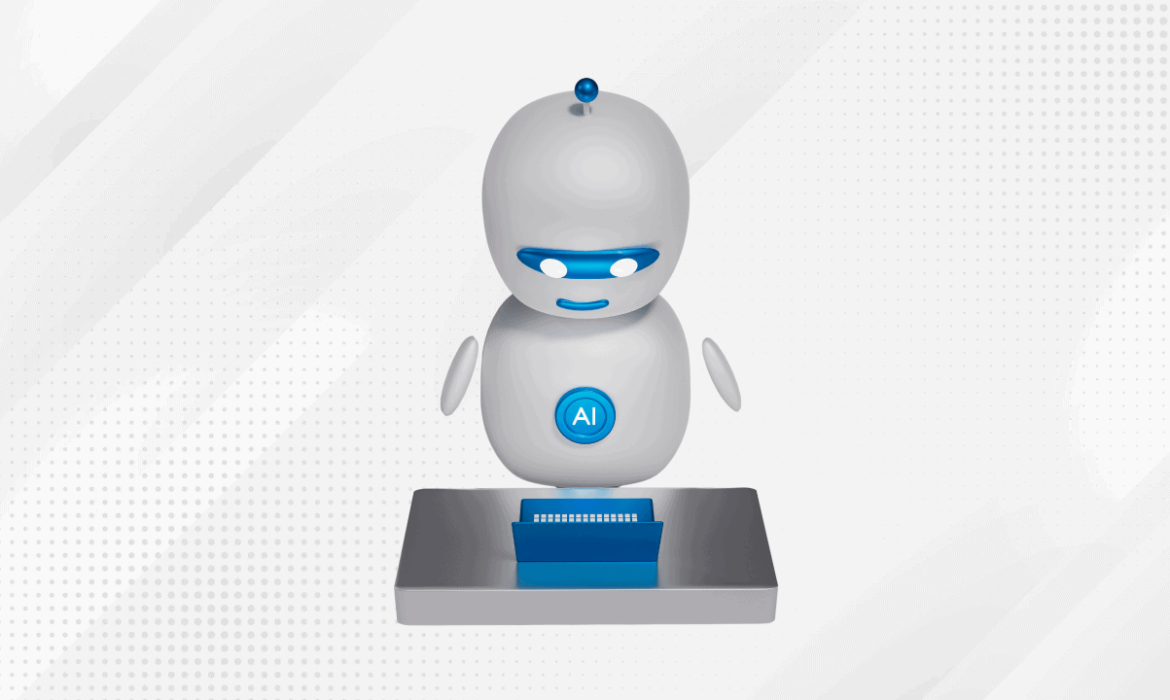Streamlining Digital Transformation with BPM
While the world is getting digitized in diverse domains, why not business processes? How about transforming any manual or semi-automated business processes into digitized and automated services? Why do so? Across diverse businesses, services typically encompass customer interactions, order processing, supply chain management, and internal workflows. By migrating these processes to digital platforms, organizations gain numerous advantages, including heightened efficiency, fewer errors, enhanced data accuracy, and elevated customer satisfaction.
While a variety of BPM tools exist such as IBM Business Process Manager, Appian, Bizagi, Pega, Camunda, Nintex, Bonita, TIBCO BPM, Oracle BPM Suite, and K2, they offer a streamlined approach to modeling, automating, executing, and monitoring business processes in various sectors. These tools provide a visual representation of processes, allowing stakeholders to collaboratively design and optimize. When it comes to converting traditional processes into digital services, BPM tools prove invaluable. The process to streamline businesses remains consistent with following steps
Process Modeling and Design: BPM tools visually define map processes aiding in spotting inefficiencies. Graphical representation fosters collaboration and communication, enhancing stakeholder understanding.
Automation and Integration: BPM tools integrate diverse systems for end-to-end digital services spanning departments and technologies, while automating manual tasks, boosting speed and consistency minimizing errors.
Data-Driven Insights: BPM tools offer analytics and reporting. Monitoring digital services provides data on performance, bottlenecks, and interactions, enabling informed decisions and improved efficiency, satisfying customers.
Flexibility and Agility: BPM tools foster agility by enabling process modeling, testing, and adjustments. This flexibility aids smooth transitions and optimizations, vital in evolving business environments.
Enhanced Customer Experience: Digitalization enhances customer experiences. Converting processes like orders and support to digital offers quick responses, self-service, personalization, elevating satisfaction and loyalty.
Compliance and Governance: BPM tools enable compliance integration in digital services, embedding regulations, security, and approvals. This guarantees adherence to industry standards and organizational policies during process design.
Key Features Signifying the BPM Tools
Lucidchart: Lucidchart is a visual workspace that bridges the communication gap between business and IT teams in BPM by enabling collaborative process modeling and diagramming.
UML (Uniform Modeling Language): UML is a standardized language for visualizing, designing, and documenting software systems. It’s integral in BPM for precise process representation and analysis.
Flowchart Symbols: Flowcharts use symbols and notations to illustrate processes, aiding in BPM by visually conveying steps, decisions, and workflows.
Data Flow and Control Flow: In BPM, data flow and control flow diagrams depict how data moves and how processes are controlled, enhancing clarity in process understanding.
Data Mining: Data mining techniques within BPM uncover insights from process data, enabling data-driven decisions and continuous improvement.
Business Process Analysis: BPM analyzes existing processes to enhance efficiency or governance. It identifies bottlenecks and inefficiencies, enabling informed process enhancements.
Hyper Automation: Hyper Automation, a BPM approach, combines AI, RPA, and other tools to automate complex processes, boosting efficiency and reducing manual effort.
Six Sigma: Six Sigma methodologies, applied in BPM, streamline processes, minimize defects, and enhance overall process quality, aligning with BPM’s efficiency goals.
Application of BPM Tool in Healthcare Industry
In the healthcare industry, the application of BPM tools holds immense potential to revolutionize business operations, streamline patient care processes, and enhance overall efficiency.
Enhancing Patient Journey:
BPM tools enable healthcare providers to map out and optimize patient journeys, from appointment scheduling to discharge. By visualizing the entire process, identifying bottlenecks, and automating routine tasks, hospitals and clinics can improve patient experience, reduce waiting times, and ensure timely care delivery.
Claim and Billing Management:
Efficient claim processing and billing are paramount for healthcare businesses. BPM tools can automate the end-to-end claim process, from submission to reimbursement, minimizing errors, accelerating claims processing, and ensuring accurate billing, which in turn leads to improved revenue cycle management.
Supply Chain Optimization:
In healthcare, an optimized supply chain is crucial for maintaining inventory levels of medications, medical devices, and equipment. BPM tools streamline procurement, tracking, and distribution processes, preventing shortages, reducing costs, and ensuring essential supplies are readily available.
Patient Onboarding and Engagement:
BPM tools can facilitate seamless patient onboarding, enabling electronic consent forms, electronic health record (EHR) integration, and personalized treatment plans. This enhances patient engagement and enables remote monitoring, fostering a patient-centric approach.
Telemedicine Integration:
As telemedicine gains traction, BPM tools can streamline virtual consultations, appointment scheduling, and prescription issuance. Integration with telehealth platforms ensures efficient communication between healthcare professionals and patients.
Risk Management and Patient Safety:
Identifying and mitigating risks is vital in healthcare. BPM tools enable healthcare businesses to assess risks, implement preventive measures, and track incidents. This proactive approach enhances patient safety and reduces medical errors.
Integrating BPM tools in healthcare enhances operations, betters patient results, and cuts expenses. Automation, compliance, and collaboration enable agile navigation through the intricate healthcare ecosystem.
Unleashing the Power of Digital Twins: An Innovation in Telecommunications
Why unleash the power of digital twins in telecommunications? In the fast-paced and ever-evolving telecommunications industry, staying ahead of the curve is a constant challenge. However, Digital twins are a technology that is transforming the way of operations and networking massively. With the power to revolutionize telecommunications, digital twins have emerged in the race to deliver seamless connectivity and exceptional user experiences.
In the dynamic realm of telecommunications, digital twins play a crucial role in simulating and monitoring various elements such as network infrastructure, devices, and even customer experiences. By providing real-time visualization and understanding of intricate systems, digital twins empower telecom operators to maximize network performance, swiftly address issues, and proactively predict potential failures. The possibilities are truly endless when it comes to leveraging digital twins for an optimized and seamless telecommunications experience. Let’s explore this exciting frontier together!
Digital Twins Mechanism
Every individual component can be created in digital space, the way those components interact with each other in the real world and often the environment they exist in, are digitally replicated. Leveraging the power of artificial intelligence, these digital twins simulate and vividly demonstrate the potential impacts that alterations in design, process time, or conditions would have—without the need to subject real-world objects to those same changes. Simply, it’s like having a digital playground where experimentation and optimization can happen swiftly and intelligently!
Let’s explore an example of a digital twin in the field of telecommunications: Imagine a telecommunications company that operates a vast network of cellular towers and antennas to provide wireless connectivity. They create a digital twin that replicates their entire network infrastructure, including the placement and configuration of towers, antennas, and other critical components.
With this digital twin, the company can continuously monitor and optimize its network’s performance. They can simulate various scenarios, such as changes in user demand, network congestion, or the addition of new towers, to predict how the network will behave under different conditions. These insights enable the company to proactively address network bottlenecks, optimize signal strength, and enhance overall service quality.
Digital twins in telecommunications
Digital twins have limitless potential in the field of telecommunications.
1. Network Planning and Optimization: Telecommunication companies can use digital twins to create virtual replicas of their network infrastructure, including towers, switches, routers, and other equipment. This helps in planning and optimizing network capacity, coverage, and performance. Digital twins can simulate real-time traffic patterns, predict network congestion, and identify areas that require additional infrastructure investment.
2. Predictive Maintenance: Digital twins can monitor the health and performance of telecommunication equipment, such as towers, switches, and routers. By analyzing real-time data from these digital twins, companies can identify potential failures or maintenance needs before they occur. This reduces downtime and increases operational efficiency.
3. Customer Experience Management: Digital twins can be created to represent individual customers or user segments. By analyzing data from these digital twins, telecommunication companies can better understand customer behavior, preferences, and usage patterns. This enables them to offer more personalized services, improve customer satisfaction, and optimize marketing strategies.
4. Service Assurance: Digital twins can provide real-time monitoring and analysis of network performance and service quality. By comparing the actual performance with the digital twin’s expected behavior, companies can quickly detect and resolve service issues, minimizing the impact on customers and ensuring a smooth user experience.
In a nutshell, the digital twins empower telecommunications companies to optimize their network operations, predict and prevent disruptions, boost innovation and productivity, and deliver reliability and efficiency. Isn’t it interesting to unleash the power of digital twins to explore better plan capacity, simulate changes, and ensure optimal performance twins in telecommunications!
Top 3 Advantages of Implementing Chatbot with ChatGPT
Why Chatbot again when ChatGPT is ruling over?! Or why not their combination?! ChatGPT, a revolutionary tool stands for a generative pre-trained transformer which is an interactive platform through chat, designed to give comprehensive answers whereas chatbots are plugins using Natural Language Processes for any business or website to interact with.
Chatbots are typically pre-programmed with a limited set of responses, whereas ChatGPT is capable of generating responses based on the context and tone of the conversation. This makes ChatGPT more personalized and sophisticated than chatbots. Both ChatGPT and chatbots are conversational agents designed to interact with humans through chat giving them real experience. However, there are some them in various factors.
Differences between ChatGPT and Chatbot
Efficiency and speed
Chatbots can handle a high volume of user interactions simultaneously with fast responses. They quickly provide users with information or assist with common queries, reducing wait times which improves overall efficiency. In contrast, ChatGPT generates responses sequentially and has limited scalability for handling large user bases.
Task-specific expertise
Chatbots can be built with specialized knowledge or skills for specific industries or domains. For instance, a chatbot in healthcare can provide accurate medical advice or help schedule appointments, leveraging its deep understanding of medical protocols. ChatGPT, while versatile, may not possess such specialized knowledge without additional training.
Control over responses while user interaction
Chatbots offer businesses more control over the responses and images they want to project. As a developer, you can design, curate, and review the responses generated by a chatbot, ensuring they align with your brand voice and guidelines. ChatGPT, although highly advanced, generates responses based on a large dataset and may occasionally produce outputs that are off-topic or not in line with your desires.
Improved conversational capabilities
Integrating ChatGPT into a chatbot, can leverage its advanced natural language processing abilities. ChatGPT excels at understanding context, generating coherent and human-like responses, and handling more nuanced conversations. This can enhance the overall conversational experience for users interacting with the chatbot.
Advantages Chabot with ChatGPT
Richer and more engaging interactions
ChatGPT’s ability to understand and generate natural language responses can make the interactions with the chatbot feel more realistic and engaging. The chatbot can provide personalized and contextually relevant responses, leading to a more satisfying user experience.
Continuous learning and improvement
ChatGPT is designed to learn from user interactions, allowing it to improve its responses over time. Integrating ChatGPT with a chatbot enables the system to continuously learn and adapt based on user feedback. This means that the chatbot can become smarter and more effective at understanding and addressing user needs.
Flexibility and scalability
ChatGPT can be integrated with various chatbot platforms and frameworks, offering flexibility in implementation. ChatGPT is constantly learning, which means that it can improve its responses over time by building a chatbot for customer support, virtual assistants, or other applications.
Integration of ChatGPT into the back end of the chatbot requires to implementation of their combination. Whenever a user enters a message, the chatbot would pass that message to ChatGPT, which would generate a response based on its machine-learning algorithms using the cloud services. The chatbot would then display the response to the user. This approach can result in a more natural and intuitive conversation between the user and the chatbot, as ChatGPT is capable of generating responses that are more human-like.
In summary, ChatGPT is a more advanced and intuitive conversational AI, it may not always have access to real-time data or provide the most up-to-date information on rapidly changing events than traditional chatbots. But it is capable of understanding the nuances of human language, context, and intent, which makes it a more effective tool for customer service, personal assistants, and other applications while generating responses to user input, while the chatbot serves as the interface through which users can interact with the system.





